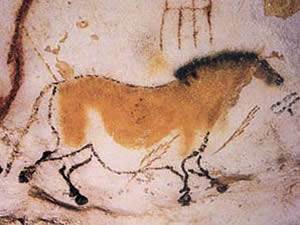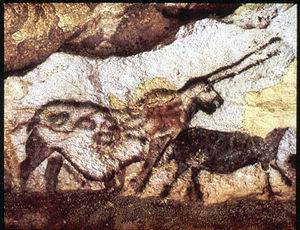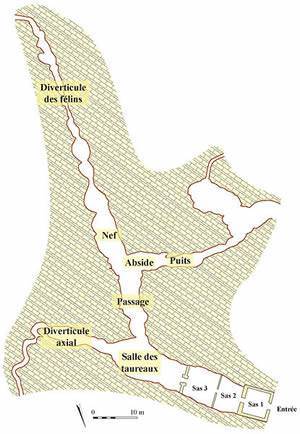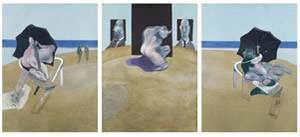
Lascaux Cave paintings


Lascaux Cave plan
A fungus threatens the prehistoric cave paintings of Lascaux, France
January 3rd 2008 – One of the jewels of prehistoric art, the Lascaux Cave paintings in France, could be seriously damaged by a fungus. Therefore, a group of archaeologists have decided to apply a fungicide over the paint to preserve this Paleolithic treasure
]]>
Experts believe that the fungus has reached the interior of the caves (free of this threat for 15,000 years) through an air ventilation system installed years ago
The Lascaux Caves have been closed to the public for almost 45 years, and 25 years ago a replica of the caves was installed in the town of Montignac.
About the Lascaux cave paintings
Lascaux is a complex of caves in the village of Montignac, in the Dordogne département, southwestern France, famous for its cave paintings. They contain some of the most well-known Upper Paleolithic art, dating back to somewhere between 15,000 and 13,000 BCE. They consist mostly of realistic images of large animals, and were added to UNESCO World Heritage Sites list in 1979
The caves were not discovered by scientific expeditions. As in the case of the Altamira Caves, the Lascaux cave paintings were found by a group of teenagers in September 1940. The beauty of the caves has led some people to refer to Lascaux as “The Sistine Chapel from the Paleolithic”, a title that, curiously, has also been given to Altamira.
The caves contain almost 2,000 figures. Most of them are realistic images of large animals such as bulls or horses. Some figures are, however, non-figurative images, like geometrical patterns. One of the most famous paintings from Lascaux is the “unicorn”, pictured left.
In 1983, a replica of the caves was open in Montignac, near the original caves.
Follow us on:


